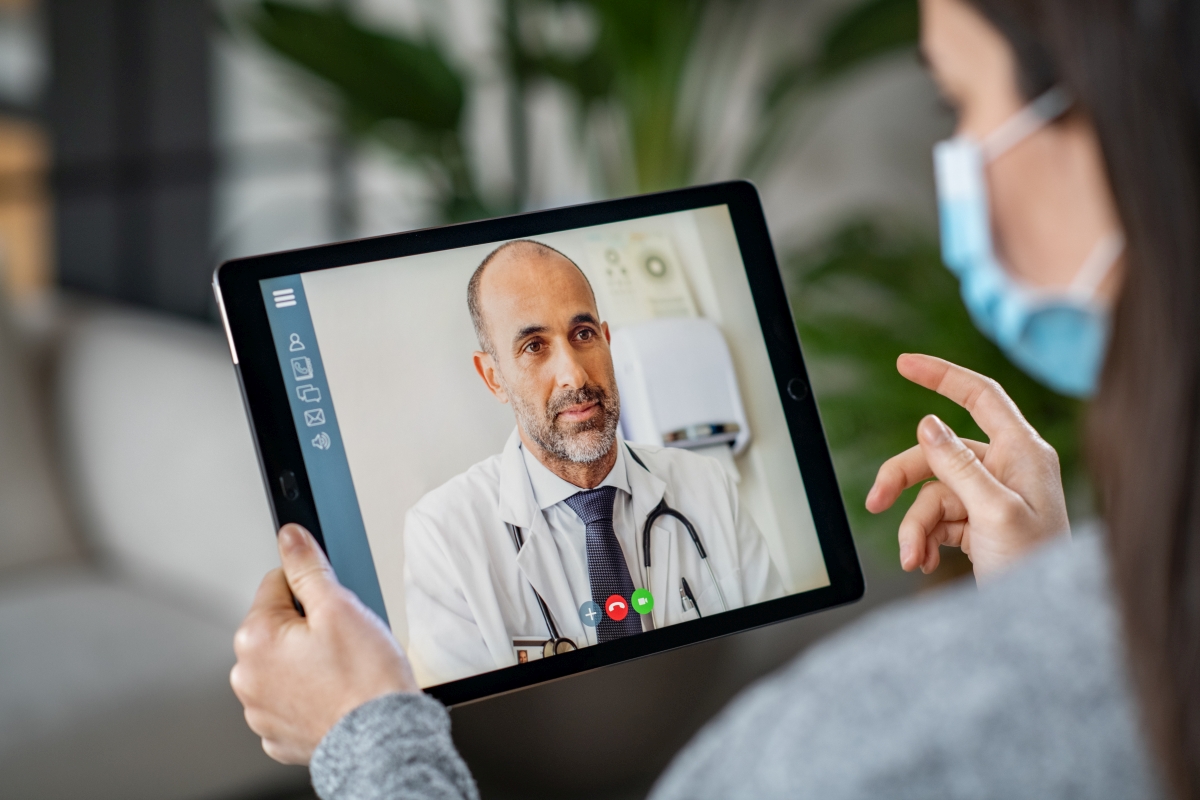Top Teledoctors Solutions for Convenient Online Medical Care
Top Teledoctors Solutions for Convenient Online Medical Care
Blog Article
Teledoctors: Connecting the Space In Between People and Doctor
The development of teledoctors stands for a substantial shift in the health care landscape, offering services to enduring access issues encountered by service providers and individuals alike. By integrating telemedicine into conventional methods, healthcare systems can get to remote and underserved populations, giving important clinical assessments without the barriers of distance and travel. This standard change not just boosts client involvement yet also enhances resource allowance for service providers. Nevertheless, the extensive fostering of teledoctors raises essential concerns regarding the sustainability of such practices and the ramifications for future health care delivery. What obstacles exist ahead in ensuring this design's performance and equity?
Rise of Telemedicine

The surge of telemedicine is additionally sustained by the requirement for cost-efficient medical care. Medical care systems internationally are under stress to reduce costs while maintaining top quality care, and telemedicine uses a practical solution. By decreasing the demand for physical sees, telemedicine lowers overhanging expenses for healthcare centers and ultimately lowers the economic problem on individuals.
Additionally, the COVID-19 pandemic worked as a driver, speeding up the adoption of telemedicine methods. Social distancing measures and the demand to minimize direct exposure threat necessitated a shift in the direction of remote assessments, triggering regulatory bodies to adjust and sustain telehealth services. This shift has not just proven telemedicine's efficiency yet additionally its prospective to evolve as a staple component of contemporary health care systems.
Advantages for People
As telemedicine remains to reshape medical care shipment, people stand to gain significantly from this makeover. Largely, telemedicine improves ease of access, permitting clients in underserved or remote areas to seek advice from medical care service providers without the requirement for substantial travel. This is specifically advantageous for people with flexibility issues or those living in country areas where medical care facilities could be limited. Telemedicine also supplies people the convenience of receiving clinical advice and therapy from the comfort of their homes, lowering the moment and expense connected with taking a trip to a health care center.
Moreover, telemedicine supports connection of treatment by helping with regular follow-ups and surveillance, which are critical for handling persistent problems. Individuals can easily arrange visits and gain access to health care services outside typical workplace hours, accommodating their hectic lifestyles. This adaptability leads to improved patient involvement and adherence to therapy plans, potentially causing far better wellness results.
In addition, telemedicine can assist reduce the danger of infection transmission, a concern heightened by the COVID-19 pandemic. By reducing the demand for in-person check outs, clients can stay clear of crowded waiting rooms and lower exposure to contagious ailments. Inevitably, telemedicine equips individuals by providing prompt, efficient, and personalized healthcare services.
Advantages for Service Providers
For medical care providers, telemedicine uses substantial advantages that improve the performance and reach of their practice. By leveraging electronic innovation, companies can expand their services to a broader market, consisting of those in underserved or remote areas. This not just eases geographical obstacles but likewise maximizes person retention and purchase by making medical care more available.
With telemedicine, the requirement for physical area diminishes, permitting companies to save on real estate and functional expenditures. This adaptability can lead to enhanced person consultations per day, therefore improving profits possibility.
Telemedicine also cultivates a much more collective atmosphere for health care service providers. teledoctors. It makes it possible for seamless sharing of patient more information info among experts, boosting analysis accuracy and therapy outcomes. In addition, electronic systems can integrate with electronic wellness documents (EHRs), boosting information precision and improving administrative tasks
Moreover, telemedicine enhances client fulfillment, which is important for supplier reputation and success. By supplying prompt and convenient treatment, companies can improve individual loyalty and interaction, further reinforcing the provider-patient relationship.
Overcoming Challenges
While telemedicine provides many advantages for weblink medical care carriers, it additionally presents obstacles that need cautious consideration. Healthcare providers must stick to stringent laws like HIPAA to secure delicate information, thus calling for financial investment in secure platforms and ongoing staff training. teledoctors.
Another challenge is the digital divide, which can impede accessibility to telemedicine services. Not all patients have equal accessibility to the needed innovation or net connection, especially those in underserved or rural locations. This variation can exacerbate existing healthcare inequalities, making it vital for carriers to explore alternate remedies, such as partnerships with neighborhood companies, to link this space.
Additionally, there are constraints in performing health examinations from another location. Certain problems require in-person assessment, highlighting the need for a crossbreed version that integrates telemedicine with traditional check outs. Carriers must browse these challenges by developing protocols to determine when telemedicine is proper and ensuring smooth transitions between in-person and virtual care.
Future of Medical Care
The future of health care is positioned for a transformative development, driven by the quick combination of modern technology and development. Central to this change is the surge of telemedicine, which is redefining just how medical services are accessed and delivered. With improvements in data, telehealth systems are ending up being a lot more innovative, offering real-time appointments, remote individual tracking, and personalized care plans. This not just boosts individual comfort but also increases accessibility to healthcare, especially in rural and underserved locations.
Expert system (AI) and device discovering are likewise set to play essential functions. These modern technologies can assess large amounts of data, offering predictive understandings into client wellness, improving diagnostic accuracy, and customizing treatment plans. AI-driven tools can boost doctor' capabilities, bring about even more enlightened decision-making and official site far better patient outcomes.
Moreover, wearable modern technology and Internet of Clinical Points (IoMT) devices are transforming individual interaction and proactive health and wellness management. These devices allow continual health monitoring, allowing for early detection of prompt interventions and possible problems.
As these modern technologies remain to advance, they promise to create a more efficient, available, and patient-centric medical care system, inevitably connecting the gap in between people and doctor. - teledoctors
Verdict
Teledoctors are transforming medical care by dramatically boosting access and performance through remote appointments. This innovation sustains individuals in underserved areas by offering timely clinical advice without needing physical gos to, thus enhancing client involvement and continuity of care. Doctor benefit from extra effective time monitoring and improved partnership chances. Despite obstacles such as technical barriers and regulative concerns, the future of healthcare shows up increasingly inclusive and reliable because of the integration of telemedicine into conventional treatment versions.

As telemedicine continues to reshape healthcare shipment, patients stand to get dramatically from this makeover. Primarily, telemedicine enhances accessibility, allowing people in underserved or remote locations to get in touch with healthcare providers without the need for extensive travel. Telemedicine additionally offers patients the convenience of receiving clinical guidance and therapy from the convenience of their homes, reducing the time and cost linked with traveling to a medical care center.
Eventually, telemedicine encourages people by giving timely, reliable, and personalized health care solutions.
Report this page